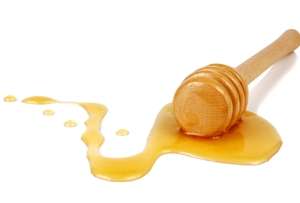Scottish heather honey is best for beating bacteria

Honey has long been known for its anti-bacterial properties: it was prized by the ancient Egyptians and is widely used today in veterinary medicine as a wound dressing.
The most famous honey used for medical purposes is Manuka honey from New Zealand, but a new study has revealed a particular type that is even more effective – Scottish heather honey.
The study, published in The Veterinary Journal, was carried out by Dr Patrick Pollock, an equine surgeon, and colleagues at the School of Veterinary Medicine at the University of Glasgow.
A keen bee-keeper, Dr Pollock was interested to know if honeys other than Manuka might make effective anti-bacterial wound dressings.
Dr Pollock said: "Although Manuka has been the most studied honey source to date, other honey sources may have valuable antimicrobial properties too.
"Honey is useful in equine medicine, particularly on wounds to legs. There is not much fat on the lower half of horses' legs, so can take a long time to heal, or even never fully heal at all.
"Honey helps to promote healing, cleaning the wound and keeping it infection free. If vets were able to use locally-sourced, cheaper honey as a wound dressing, it would be very beneficial particularly in poorer countries."
The researchers took 29 honey products, including commercial medical grade honeys, supermarket honeys and honeys from local bee-keepers, and examined them for bacterial contamination before testing.
Of the 29, 18 were found to contain bacteria that excluded them from the trial and the remaining 11 were tested against 10 equine bacterial isolates at concentrations varying from 2% to 16%.
Eight of the honeys were effective against all the bacteria at concentrations ranging from 2% to 6%.
Heather honey from the Inverness area was shown to be particularly effective – killing MRSA microbes and three other types of bacteria at concentrations of 2%.
Dr Pollock said: "Honeys derived from one type of flower were shown to be the most effective, and while Manuka is currently the only medical grade honey, the study reveals that other honeys may be just as suitable for such purposes.
"Consequently, it may prove unnecessary to transport Manuka honey from New Zealand when more local sources may be as, or even more, effective.
"In many regions of the world access to expensive antimicrobial drugs is limited, therefore locally-sourced honey may provide an inexpensive alternative.
"In future it may be possible to identify honeys with activity against specific bacteria. This would allow the clinician to select the most appropriate honey type for the infecting organism."
Honeys largely get their antimicrobial properties from the hydrogen peroxide they contain, but Manuka is thought to benefit from other factors, including an as yet poorly understood phytochemical property and, or, the presence of methylglyoxal.
Dr Pollock added: "Some vets use inexpensive honeys intended for human consumption while others use medical grade, gamma-irradiated Manuka honey which is sometime incorporated into a wound care product or dressing.
"However, our study suggests that the use of certain non-medical grade honeys, derived from mixed floral sources, may not be appropriate for wound care due to the presence of contaminating aerobic bacteria."
Provided by University of Glasgow


















